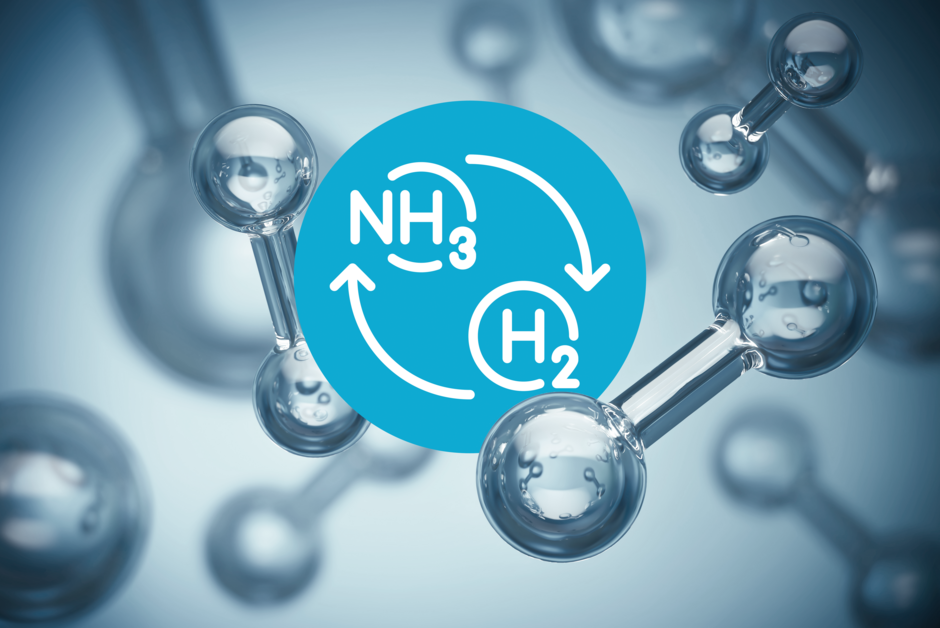Innovation area III
H₂ recovery
This innovation area deals with reforming, i.e. the complete or partial breakdown of ammonia into hydrogen and nitrogen. This product mixture can be used variably - for combustion, in fuel cells, in steel production or in the chemical industry, among other uses. The focus in this innovation area is on catalytic reforming, while syngergies to the electrochemical conversion of ammonia into its elements in Innovation Area II are exploited. The research topics in this innovation area include the development of new catalyst materials, the investigation of the decomposition's reaction kinetics and the purification of the resulting product mixtures.

Sub-project III.1
Treatment of gas mixtures after ammonia reforming and synthesis
The product mixtures from catalytic or electrochemical NH3 decomposition must be treated in order to achieve the required concentrations for subsequent hydrogen use. This also applies to the product gas streams from ammonia synthesis. The basic approach of this project consists of a partial condensation of ammonia followed by a membrane or adsorption process to concentrate the hydrogen.
Researchers
Prof. Dr.-Ing. Philip Jaeger
Clausthal University of Technology
Sub-project III.2
Microkinetics of catalytic ammonia decomposition
The reaction rate of NH3 catalytic decomposition is determined in relation to the reaction conditions on selected catalysts. For this purpose, temperature-programmed experiments are carried out in a test apparatus and in addition stationary and dynamic experiments in laboratory reactors. The experimental results are then mathematically evaluated using suitable reactor models in order to obtain precise microkinetic parameters.
Researchers
Prof. Dr.-Ing. Thomas Turek
Clausthal University of Technology
Sub-project III.3
New catalysts for the catalytic and/or electrochemical decomposition of ammonia to hydrogen
To date, the reforming of ammonia has mostly been carried out using catalysts based on the precious metal ruthenium. In order to replace this precious metal, catalysts containing the elements Fe, Co and Ni are being developed. In this process, high dispersion and surface structure control must be taken into account. In addition, this project will investigate the suitability of the catalysts for the electrochemical reforming of NH3.
Researchers
Prof. Dr. Michael Wark
University of Oldenburg